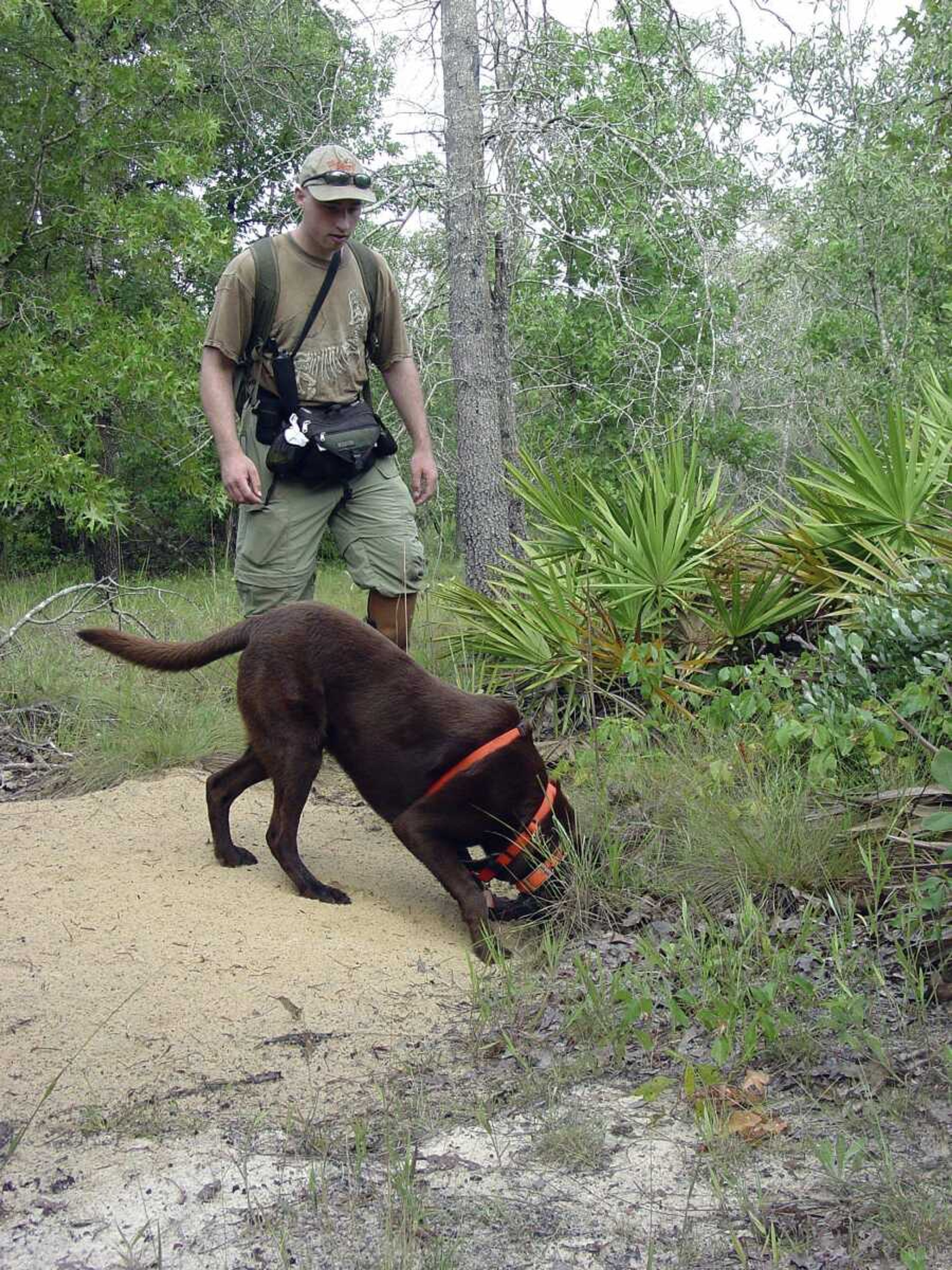Not many dogs get to go for a walk in the woods and call it a job. But when CJ the chocolate Lab sniffs at the ground and sits, he's doing some important work.
CJ is a conservation detector dog, trained by PackLeader dog training in Gig Harbor, Wash. He has traveled the world helping researchers working on various species, including maned wolves in Brazil, bobcats and bats in New Mexico, and spider monkeys in Nicaragua.
In one of CJ's adventures, he was trained to find indigo snakes with the Orianne Society, a group devoted to the conservation of that species. The indigo, found only in the Deep South, is one of the largest snakes in North America.
"They are spectacularly beautiful," said Dirk Stevenson, directory of inventory and monitoring for the society. "They are blue-black -- iridescent violet in sunlight, really -- with large smooth scales and a hint of salmon blush on the chin and neck."
If you're not as susceptible to a snake's beauty as Stevenson is, he has another way to sell you on this species: "They love to eat other snakes," he said, including venomous ones.
The indigo snake is threatened by habitat loss and by declining numbers of gopher tortoises, whose burrows it uses for shelter. The snake has disappeared from some parts of its original range, so the first step in conserving it is to figure out where it still lives.
One way a dog can help is by following the scent of snakes hidden deep in burrows where they can't be seen.
In some cases, conservation dogs are used to find not the animals themselves, but other evidence of their presence. For large animals, that may be scat, or droppings. For this project, CJ learned to find shed skins, as well as live snakes.
"The trained dog became gifted at finding the shed skins of the snake, which you or I could miss because they fall apart," Stevenson said.
Even closely related species may smell different to a dog; CJ was trained to ignore other species of snakes and, for safety, to avoid rattlesnakes. Trainer Barbara Davenport said the dogs also can learn to generalize when necessary.
"We trained a dog on Javan rhinos," she said, "but we didn't have any scat from a Javan, so the project manager sent scat from all the other species." The dog learned to respond to any species of rhino, which worked for the project, because only one type lived in the habitat being studied.
Davenport, who also works full time training narcotics detector dogs, has been training dogs for conservation work since 1997. Just as important as training, she said, is picking the right dog for the job.
PackLeader finds most of its dogs in shelters, and looks for exactly the qualities that might bother the average pet owner. The ideal candidates have nice temperaments, said Davenport, but they're also "high-drive, high-energy, obsessive, destructive when bored" -- dogs that would be hard to find homes for.
Besides that, different individual dogs may work best for finding particular species.
"Some dogs are successful at bears, but you give them cat scat and they want to roll in it," Davenport said.
For a research project on the North Atlantic right whale -- its droppings float, and can be smelled from a distance -- Fargo, a Rottweiler, was chosen because with his broad chest, he "was the best at balancing on the boat," Davenport said.
CJ was picked for the indigo snake project because he's a bit more laid-back than some of the dogs. One, named Bruiser, "never saw brush he thought he couldn't get through," Davenport said.
"CJ will look at it and say, you go first. That makes him best at working with live species -- he's not frantic to get at the source," she said.
Connect with the Southeast Missourian Newsroom:
For corrections to this story or other insights for the editor, click here. To submit a letter to the editor, click here. To learn about the Southeast Missourian’s AI Policy, click here.








